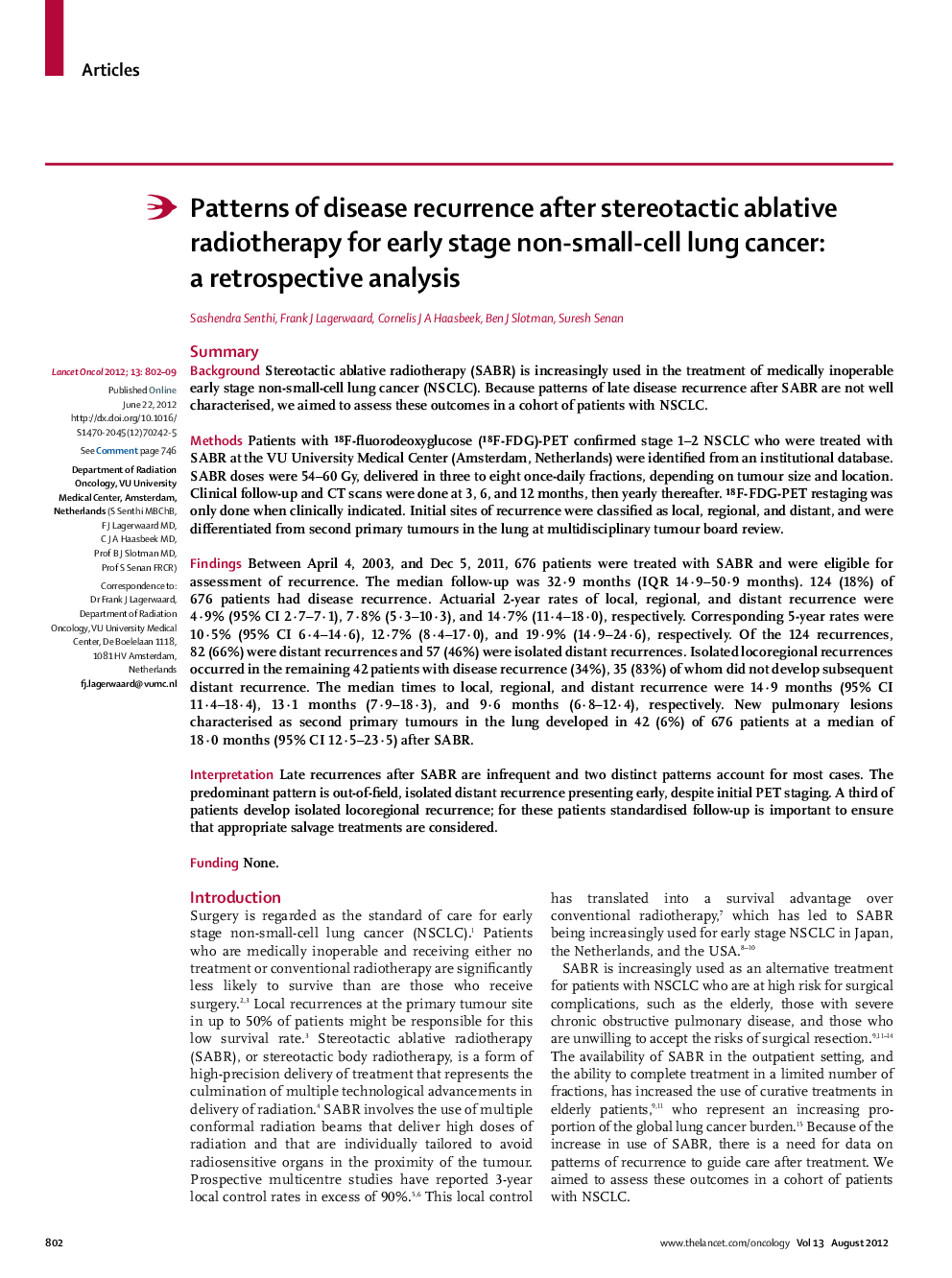| Article ID | Journal | Published Year | Pages | File Type |
|---|---|---|---|---|
| 3994814 | The Lancet Oncology | 2012 | 8 Pages |
SummaryBackgroundStereotactic ablative radiotherapy (SABR) is increasingly used in the treatment of medically inoperable early stage non-small-cell lung cancer (NSCLC). Because patterns of late disease recurrence after SABR are not well characterised, we aimed to assess these outcomes in a cohort of patients with NSCLC.MethodsPatients with 18F-fluorodeoxyglucose (18F-FDG)-PET confirmed stage 1–2 NSCLC who were treated with SABR at the VU University Medical Center (Amsterdam, Netherlands) were identified from an institutional database. SABR doses were 54–60 Gy, delivered in three to eight once-daily fractions, depending on tumour size and location. Clinical follow-up and CT scans were done at 3, 6, and 12 months, then yearly thereafter. 18F-FDG-PET restaging was only done when clinically indicated. Initial sites of recurrence were classified as local, regional, and distant, and were differentiated from second primary tumours in the lung at multidisciplinary tumour board review.FindingsBetween April 4, 2003, and Dec 5, 2011, 676 patients were treated with SABR and were eligible for assessment of recurrence. The median follow-up was 32·9 months (IQR 14·9–50·9 months). 124 (18%) of 676 patients had disease recurrence. Actuarial 2-year rates of local, regional, and distant recurrence were 4·9% (95% CI 2·7–7·1), 7·8% (5·3–10·3), and 14·7% (11·4–18·0), respectively. Corresponding 5-year rates were 10·5% (95% CI 6·4–14·6), 12·7% (8·4–17·0), and 19·9% (14·9–24·6), respectively. Of the 124 recurrences, 82 (66%) were distant recurrences and 57 (46%) were isolated distant recurrences. Isolated locoregional recurrences occurred in the remaining 42 patients with disease recurrence (34%), 35 (83%) of whom did not develop subsequent distant recurrence. The median times to local, regional, and distant recurrence were 14·9 months (95% CI 11·4–18·4), 13·1 months (7·9–18·3), and 9·6 months (6·8–12·4), respectively. New pulmonary lesions characterised as second primary tumours in the lung developed in 42 (6%) of 676 patients at a median of 18·0 months (95% CI 12·5–23·5) after SABR.InterpretationLate recurrences after SABR are infrequent and two distinct patterns account for most cases. The predominant pattern is out-of-field, isolated distant recurrence presenting early, despite initial PET staging. A third of patients develop isolated locoregional recurrence; for these patients standardised follow-up is important to ensure that appropriate salvage treatments are considered.FundingNone.
